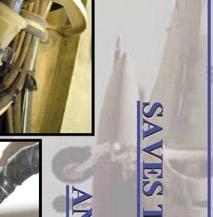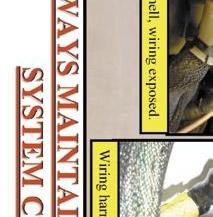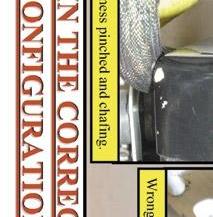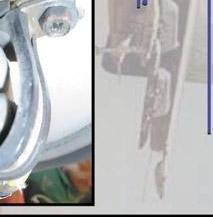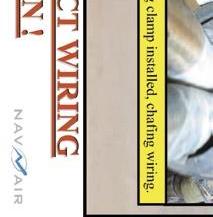
20 minute read
What’s that Burning Sensation?
By AM3 Robert Ready and AM3 Christopher Dunn

Advertisement
About three-quarters of the way through our Westpac 2005 deployment on board USS Nimitz, the ship was conducting its weekly general-quarters drill. We were sitting on a workbench, something we often did due to the small area in the shop. Just before GQ was announced, we noticed that a cup of PD-680 had spilled on the workbench between us (although we didn’t know it was PD-680 at the time.). PD-680 is a dry-cleaning solvent that is hazardous and corrosive. We immediately jumped off the workbench and grabbed some rags to clean up the spill.
About 15 minutes before general quarters secured, nearly three hours after being exposed to the spill, we looked at each other and confirmed that our buttocks were burning. At that point, we hopped off the workbench and put away our flash gear and gas masks while the burning became more and more intense. Neither of us yet had realized some of the PD-680 was on the back of our pants.
We quickly told our shift supervisor of our situation and ran to our berthing space to rinse off the chemical. After a 15-to-20-minute shower, the burning sensation had subsided but had not gone away completely. When I looked at my rear in the mirror, I saw a large red rash.
We returned to our shop and told our supervisor we had to go to medical to have the rash examined. There, we were advised to sleep on our stomachs and, if the pain and redness returned, to come back to medical for some ointment. Several hours and a decent amount of paperwork later we were headed back to our shop.
We learned several lessons from this incident. First, return hazmat to its appropriate location following use. Second, dispose of used hazwaste at your local hazmat
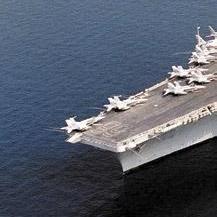


Navy photo by PH3 Christopher Stoltz

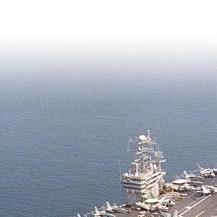
center. Also don’t leave open containers of hazmat sitting on a workbench for the on coming shift to take care of. We also could have reduced the amount of discomfort if we had noticed our pants were soaked early on. Don’t expect someone else to pick up after you. Before finishing a job, make sure all of your hazmat, PPE and tools are stored properly.
Petty Officers Ready and Dunn work in the line division at VAQ-135.
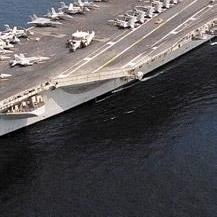
Navy photo by PH2 Matthew MaGee
Send BZs to: SAFE-Mech@navy.mil
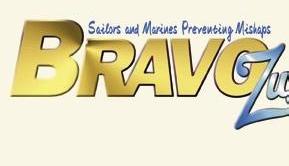


Cpl. Christopher Ruark HMH-361 AM3 Christopher Harris VP-4
chant noticed the amount of effort to set the required torque was much less than previous times. He got another torque wrench and verified the torque setting was lower, so he immediately notified maintenance control of the situation.
Petty Officer Merchant’s attention to detail resulted in the discovery of a torque wrench that the calibration lab found was 17 percent low. Not knowing how many propellers had been installed with this wrench since the last known calibration date, the squadron downed their aircraft until all 16 propellers had been retorqued.

AT2(AW) Joshua Brown VFA-15
While doing a phase inspection of the horizontal stabilizer on a CH53E helicopter, Cpl. Ruark discovered numerous loose fasteners on the primary structure of the stabilizer, near the mounting point for the stabilizer strut. A closer look showed two hi-loc fasteners in the fitting assembly also were loose. These fittings are essential for attaching the horizontal stabilizer to the fuselage of the aircraft.
Corporal Ruark is a knowledgeable and diligent inspector, and he found a serious problem that could have been overlooked. These items weren’t part of a normal phase inspection. The stabilizer was removed and repaired.

Petty Officer Harris and other members of airframes work center were sent to troubleshoot a binding rudder-boost-handle discrepancy on aircraft 163291. While troubleshooting, Harris noticed a “No Hydraulic” placard had fallen inside the power-levers and elevator flight-control-system console. This aluminum placard measured 4 inches by 6 inches. If it had not been discovered, it could have migrated into the elevator flight controls or powerlever cables, causing a total loss of the flight-control system.
AD1(AW) Wesley Merchant VR-62
While checking the torque on a C130T propeller nut, Petty Officer Mer
Aircraft 302 was taxiing toward the catapult for final checks when Petty Officer Brown noticed the starboard main-landing-gear wheel wobbling. He immediately gave the signal to the catapult officer to suspend the launch and told the flight-deck chief.
A closer inspection revealed the brace-assembly bearing on the upper side was broken in four places, allowing the starboard MLG to have excessive play during taxi.
Petty Officer Brown’s vigilance and attention to detail prevented a possible mishap.
ADAN Ramesh Thapa HSL-44 Det. 1
While cleaning and treating corrosion on a bolt for the tail rotor servo on Magnum 456, Airman Thapa found a bird's nest. It was difficult to see and an extraordinary find. The nest was in the aft part of the tail-rotor gearbox, inside the tail-rotor gearbox cowling. His attention to detail and extra effort highlighted a serious problem in a critical part of the helicopter, which could have led to a mishap.
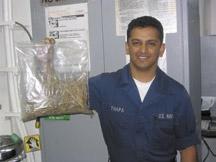
AM2 Darren Marsicola MALS-24
on using, and the spreadsheet automatically calculates the input against authorized daily allowances, alerting users if they will be going over the environmental allowances and by what amount.
This innovation is quite an improvement over the old system, where the amount of paint or thinner used during the day was calculated at the end of the day, and any overages had to be accounted for and reported to the base environmental team. This system does an excellent job of tracking hazardous materials.
AM3 Wayne Hill VR-55 AD1 David Baker VAW-113
While watching the engine starts on Black Eagle 601, Petty Officer Baker noticed that Stinger 302, an FA-18, had taxied forward next to his aircraft. He also noticed that the pilot had begun spreading the Hornet’s wings, as the taxi director directed. Baker immediately determined the wing tip was about to strike the turning starboard propeller on Black Eagle 601. He quickly signaled both the pilot and the taxi director to begin an emergency wingfold, avoiding a serious mishap.

AM2 Yunoir Royes VAW-121
Petty Officer Marsicola developed a user-friendly spreadsheet to ensure paint and thinner use does not exceed authorized allowances. Users input the amount of thinner or paint they plan
Petty Officer Hill was doing a daily inspection on a C-130T during night flight-line operations and discovered two 8-inch cracks on the skin section of the starboard upper wing. The cracks were barely discernible and were a very good find. He immediately notified maintenance control and QA to investigate the damage.
Petty Officer Hill’s attention to detail prevented catastrophic failure of the wing section.
Petty Officer Royes was observing a recovery on aircraft 600. As it taxied from the landing area to catapult No. 1 for immediate launch, he noticed the port nose tire was not inflated. Without his trained eye, Bluetail 600 could have been launched with a deflated nose tire, resulting in a tire blowout on launch or the next trap. That result could have FODed an engine or caused more severe damage.
AM2(AW) Christopher Simon VP-16
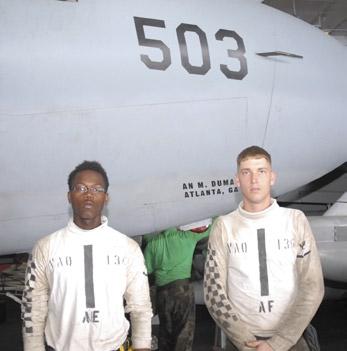
AE3 Hebert Taylor and AM3 Robert Smith VAQ-136
While assisting the power-plant shop with a discrepancy on a P-3C, Petty Officer Simon noticed a major fuel leak on the aircraft. A closer look revealed that the leak had occurred from a faulty fuel-transfer valve.
Petty Officer Simon’s quick response avoided a potentially dangerous situation. Through proper procedures and a take-charge attitude, he was able to stop and contain the leak before any harm came to the environment or aircraft.

Petty Officer Taylor noticed hydraulic fluid leaking onto an ALQ-99 tacticaljamming-system pod on station No. 3 during a routine night launch of Ironclaw 503. He immediately suspended the launch and signaled for an airframes troubleshooter to verify.
Petty Officer Smith quickly came to the scene, inspected the problem, and found that a nose-wheel-steering line had cracked, releasing hydraulic fluid from the combined hydraulic system.
Both Sailors displayed excellent attention to detail, using blue lights, at night, and on the narrowest of areas next to catapult No. 4.
MR2 Michael Renda MALS-24
Petty Officer Renda corrected a safety hazard found in the MALS-24 airframes space, specifically the hydraulic and non-destructive inspection areas. He noticed that the large overhead ventilation system regularly built up condensation, which would drip down onto a heavily trafficked passageway, creating a slip hazard. Renda installed coverings to direct the water away from the passageway and into containers. He raised the safety issue with base facilities and spoke with the controller. The next day, personnel began to replace the insulation on the overhead ventilation system.
Petty Officer Renda didn’t wait for someone else to fix the problem or accept the “status quo.” He saw a hazard that needed immediate action, and he did something about it.
CROSSFEED
Maintenance Officer
LCdr. Bert Ortiz bert.ortiz@navy.mil
Editorial Coordinator
AMC(AW) Paul Hofstad
Airframes
First Impressions Last a Lifetime
By AMC(AW) Paul Hofstad
Many people have heard the saying, “First impressions are lasting impressions.” A survey of the airframes shop at VFA-105 revealed it was the epitome of that statement. The Gunslinger airframers went above and beyond pride and professionalism in my judgment. From the time I walked into the work center until the time I left, I knew they had their heads on right and were on top of their game.
It isn’t always that way. When doing surveys on organizational airframes and corrosion work centers, I look at the following programs: hydraulics, tire and wheel, tools, NAVOSH, corrosion, ERT, RPPM, hazmat/hazwaste, and command safety. The VFA105 airframes and corrosion work-center programs were laid out well, and their manager’s binders were easy to navigate, which is a key to an effective program. If the manager is not available, any person should be able to use the binder in the case of emergencies or questions.
From the supervisor down to the most junior maintainer, the Gunslingers were open to recommendations and were eager to learn. When asked how to use a Material Safety Data Sheet (MSDS), the supervisor confidently suggested I pick any of his troops to answer that question. They ALL were trained and well-versed on how to use MSDS to identify first-aid requirements, personal protective equipment, and material handling. paul.hofstad@navy.mil

The shop looked outstanding, people looked sharp, and their programs reflected their professionalism. I’ve included a few photos that show the pride they have in their command, aircraft, work centers, and themselves. Good on ya!
Chief Hofstad is a maintenance analyst at the Naval Safety Center.
Survey
Naval Safety Center Survey Team on the Ground in Iraq
By CWO4 Ron Stebbins
Given the Naval Safety Center’s mission of enhancing warfighting through the promotion of safe operations, a survey team was dispatched to Iraq to assist the Third Marine Air Wing (Forward). The team’s primary focus was on airfield facilities, but it also included aviation-maintenance analysts, shore- and transportation-safety specialists, and an operations liaison.
The team visited units in Al Asad and Al Taquddum, Iraq. Two aviation-maintenance personnel on the team were able to visit 10 aircraft squadrons and a Marine Aviation Logistics Squadron during the trip. As anyone who has been in Iraq can tell you, the operating environment is one of the most difficult on the planet. Personnel on the flight line are assaulted by blowing dust and sand, temperatures reaching 140 degrees Fahrenheit, and an arduous operational schedule that requires around-the-clock maintenance. The squadron personnel are using Saddam-era maintenance facilities that are dilapidated in many areas and are dispersed around long flight lines, reducing efficiency and support effectiveness. In addition to issues with aircraft maintenance, local insurgents lob an occasional mortar round or rocket at the flight lines. This hazard was more prevalent in Al Taquddum.
The superior mission readiness of these forward deployed units is a testament to the exceptional training and motivation of our men and women serving in such an austere operational environment. Overcoming logistical challenges, high operational tempo, and airframe and engine wear from the heat and sand is a matter of routine for these desert warriors. A key to their sustained success is operational risk management. From mission briefs to maintenance meetings, squadron personnel continuously evaluate tasking and requirements to make sure operations are safe, and they take proactive measures to mitigate risks. Their effort to promote safe practices saves lives and preserves assets in an inherently dangerous environment.
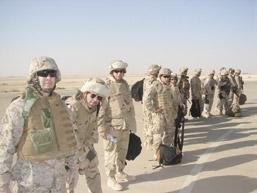
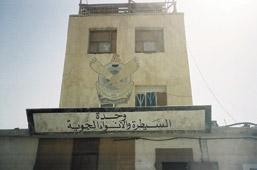
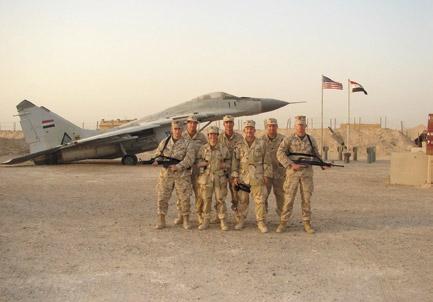
The Third MAW’s (Forward) department of safety/ standardization (DOSS) was crucial to the success of this visit, and the MAG-16 DOSS facilitated the squadron visits during high-tempo operations. The squadrons visited included: HMH-361, HMH-463, HMM-364, HMLA-167, HMLA-169, VMFA(AW)-242, VMA-211, VMAQ-3, VMGR-252, VMU-2, and MALS16 (Al Asad and Al Taquddum dets).
If your command is next in line for a return to or initial tour in Iraq, review lessons learned and use ORM to prepare for the arduous operational environment. Those people returning to Iraq for a second or third tour add invaluable experience to an By PRC (AW/SW) Brian Westcott
I’ve noticed in visits around the fleet that PPE is in poor condition and not always used correctly. This important gear is designed to protect us from various hazards, and one of the most important items is the cranial. This simple piece of equipment is one of the most used and abused items in our inventory.
How many times has your cranial been thrown in the bottom of a cruise box or tossed across the room when you’re on the run trying to make the flight schedule? Along with the cranial, I have identified LOX coveralls, aprons, face shields and gloves as other areas of concern. Using PPE correctly is one key to safety and mishap reduction. How do we mitigate our hazard risks? That answer’s simple; we use the ORM process.
ORM Step 1 – Identify Hazards: When PPE is called for in a directive, instruction, MRC, or other document, it means a hazard is associated with that step. Don’t stop at that point. Look around for other potential hazards in the work area.
ORM Step 2 – Assess Hazards: With cranials, check these items: • Is the back shell on upside down? If so, it can cause neck and spinal injuries. • Are spare lenses stored between the plastic back shell and the sound attenuator? This is a FOD hazard. • Are ear pads hard, brittle, or sticky from old age? Every wear an ear seal for 12 hours on the flight deck? It hurts, and the pads don’t reduce noise. Replace them! • Are front and back shells cracked, broken or missing pieces? If so, they can allow head trauma and can be a FOD hazard. • Have your cranial back shells been taped correctly with reflective tape? Make sure it’s the right organization, and they can help commands with the smooth transition into the country, mission accomplishment, and return to permanent duty stations.
Warrant Officer Stebbins is the airframes branch
ALSS
Personal Protective Equipment (PPE), Is It Really Going To Protect You?
head at the Naval Safety Center. amount of tape. Too much doesn’t add much visibility, and it can hold cracked shells together, causing you to miss an obvious problem. • Do you have the correct cranial goggles? The correct ones can be obtained with the following National Stock Numbers: - Black, with Speed Sleeve: 4240-01-504-6222 - Black, without Speed Sleeve: 4240-01-505-0049
LOX PPE concerns: • LOX aprons not being used. When we find aprons stored and folded in the original condition, it shows the lack of use. • LOX coveralls often are frayed at the bottom, dirty and in non-serviceable condition. • LOX face shields are cracked or broken. • LOX gloves have holes and are dirty.
ORM Step 3 – Make Risk Decisions: Our jobs are dangerous enough without the added risk of bad PPE. A drop of LOX can cause blindness or leave a scar on your skin. Bad ear pads can cause loss of hearing, and an upside down cranial can allow severe spinal injury. Knowing the risk is awareness, but mitigating the risk takes action. Use a Risk Assessment Matrix to identify your Risk Assessment Codes (RAC), and plan tasks to reduce hazards. Keep your equipment in serviceable condition.
ORM Step 4 – Implement Controls: Take time to check and inspect PPE before using it, replace as needed, and add safety controls.
ORM Step 5 – Supervise: Take care of your people and make sure they take care of their PPE! Step in and stop a process when needed, and monitor workload to ensure safety.
Take the time right now to look at your PPE. Make sure it’s in good shape, so it can protect you.
Maintenance Management
Cross-Reference Sheet Updates
By AMC(AW) Paul Hofstad
So far in CY06, less than five AIMDs or MALs have correctly documented cross-reference sheets in the program binders affecting hazmat, respirators and corrosion.
In December 2005, OpNavInst 5100.23 changed to the “G” series. Chapter 15 now requires using five-year physicals for ERT members and one-year paint physicals for people who paint and work with icocynates.
In May 2006, change 1 to CNAF 4790.2 hit the streets. Volume 1, Chapter 10, paragraph 10.3.1 changed and all RPPM, corrosion and hazmat managers should have it as a reference in their program binders. This section has three pages of changes and touches all of these programs.
Volatile organic compounds (VOCs), corrosion theory, and respirator usage are included in that chapter. VOCs are a requirement for hazmat because they identify state and federal requirements for items like polyurethane paints. By ADCS(AW/SW) Mike Tate
From Oct 01, 2006 to Dec 14, 2006, the Navy and Marine Corps had 22 Class C mishaps involving 22 aircraft. The damage total was $1,336,828.00.
Every mishap that may have a direct maintenance cause from this period is under investigation, so no specific reports can be referenced at this time. What I can say is that a large percentage of these pertain to installing, securing and attaching items and servicing equipment or aircraft.
We seem to do an excellent job working the detailed, hard to figure out jobs. Our ability to troubleshoot and execute repairs is some of the best in the world. The problem usually occurs after the hard part is complete: Confident we’ve found the cure, we let high fives fly and become complacent. That is the time when mistakes happen and dollars, critical assets, and injuries or deaths can stack up.
Class C mishaps aren’t as news breaking as a
The basics of corrosion also are discussed, including the use of paints and integration of IH surveys into corrosion work centers as a tool to create a safe environment for corrosion personnel.
Finally, respirator use is defined and provides users with parts per million (PPM) of hazmat that requires a VOC stipulation. This part is important because it also details the use of respirators, including duration and type of respirators to be used. It specifically provides respirator wearers with the requirement for an eight-hour period for air-supplied full-face respirators or half-face respirators when icocynates are not being used.
Commands normally take a few months to catch up with changes. Quality-assurance departments must make sure work centers expeditiously receive the changes and follow up to make sure the changes have been added to the program binders.
Chief Hofstad is a maintenance analyst at the
Class C Mishap Summary
Naval Safety Center. wing falling off an aircraft or engine exploding, but we have a lot of them during the year, meaning the costs add up. It’s also important to note that a Class C is only a heartbeat away from a Class B or even an A in many instances.
We must apply complete concentration and attention to detail until the last signal is given to a pilot. Before that final step, we need to be precise in everything we do. We need to listen to the aircraft as power is applied. We need to make sure everything is right from the hangar to the line and as we double check pins, safety wire and bolts. We must listen to each other and modify the plan if things don’t look right.
If we do our jobs right the “first time, every time,” we will save millions of dollars and will prevent countless injuries every year, enhancing readiness and reducing mishaps.
Senior Chief Tate is a maintenance analyst at the Naval Safety Center.
H otel Sierra Helping Sailors and Marines Help Themselves Sierra H otel
Commander, Naval Safety Center would like to thank the following aviation commands for their recent participation in safety surveys, culture workshops, and maintenance malpractice (MMP)/khaki risk management (KRM) presentations for the months of September-December.

Safety Surveys

VFA-15 HSC-28 VQ-7 VQ-3 VQ-4 VMGR-234 VR-59 MALS-13 VMA-513 VMA-214 VFA-37 VFA-113 VFA-151 VFA-137
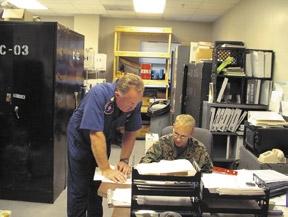
MRMs HSC-84 VFA-151 VFC-12


Culture Workshops
MALS-41 HSL-42 VFA-115 VFA-83 VMFAT-101 VP-4 HSL-37 VAW-124 VPU-2 HT-8 HT-18 HMLA-267 VXS-1 HSC-3 VT-28 VX-30 VP-47 VFA-143 USS Harry S. Truman VFA-213 VT-27 HSL-8 VP-10 VP-8 Coast Guard Airstation HX-21

Navy photo by MC3 Charles White
For more information or to get on the schedule, please contact: Safety Surveys: Capt Chris Foley, USMC at 757-444-3520 Ext. 7223, MMP/KRM: AEC Matthew Cooper at 757-444-3520 Ext. 7275, Culture Workshop: Cdr. John Morrison at 757-444-3520 Ext. 7213.
Safety wire isn’t safe… unless you are.
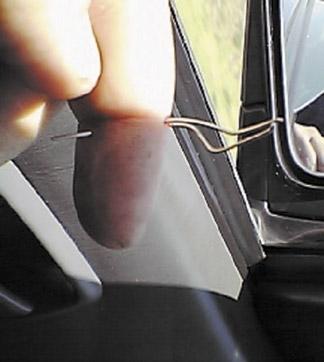
NEWS ALERT: Fifth Annual Maintenance Safety Conference in April ‘07
Who: Senior enlisted, maintenance offi cers, quality assurance representatives and supervisors, and maintenance department safety petty offi cers or NCOs.
What: Fifth conference on maintenance safety programs, operational risk management, initiatives, and available Naval Safety Center services.
Where: Admiral Kidd Club, Naval Fleet Anti-submarine Warfare Base, Point Loma, San Diego, CA.
When: 24-27 April 2007
Why: To educate safety personnel and maintenance managers on the latest safety developments and to focus on or to raise safety awareness. Everyone gets the same word…at the same time. Early registration is essential to the success of this year's conference. Those commands planning to attend need to sign up as soon as possible. We’ll need your name, rate/rank, command, current position held (safety petty offi cer, QAR, QAS, etc.), e-mail, phone number, and days planning to attend. Include any safety subjects or concerns you would like to see addressed. To register, please contact: AEC Matthew Cooper at 757-444-3520 (564 DSN) Ext. 7275 or e-mail: matthew. l.cooper@navy.mil, or ADCS Mike Tate at Ext. 7290 or e-mail: michael.s.tate@navy.mil, or AMES Ellen Darby at Ext. 7292 or e-mail: ellen.darby@navy.mil. You also can fax your registration information to 757-444-7049. Please make sure the fax states “2007 Maintenance Safety Conference.” Visit www.safetycenter.navy.mil/aviation/ maintenance/default.htm for updates and more information on the upcoming conference.


